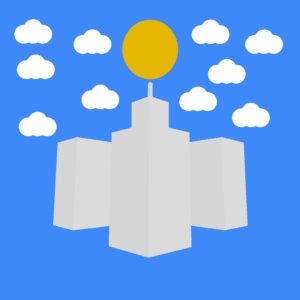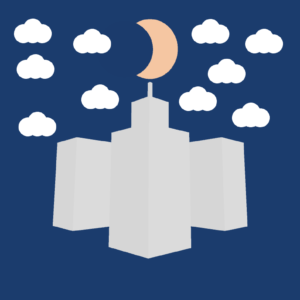I was pleasantly surprised by the way this project ended up. 

I originally wanted to make a city builder, where you could click and drag to create a building at the size you want it and it would default along the two axis that the buildings above are built upon. This was my first time working in 3 Dimensions, and I was not able to give the user this flexibility and figure out how to automate all of the rest of it to where it would still look good. Instead, I manually created the buildings (originally were going to be objects in a class), and then created cloud objects that the user could place by clicking. The user is also able to control the time of day by dragging the mouse from left to right and vice versa, and along the transition from day to night, the sun turns into the moon. I also added twinkling stars to the sky, which I originally wanted to fade in and out instead of blinking, but the dominant method for doing this was to change the opacity of the refreshing background to where the stars are slowly blotted out, however I needed the background at full opacity so that the sun/moon didn’t drag.
I had originally wanted to add lights and detail to the buildings, create a ground, with two roads running along the opposite axis with cars periodically driving across. My difficulties with the Z-axis in the inclined me keep the scene simpler if possible. When I wasn’t able to allow the user to create the buildings in the scene, it kind of changed my game plan. The original idea was to give the user a dynamic background and allow them to arrange the buildings as they like, however in a way that reversed. In the final iteration the user controls the background and the foreground is already set.
My code for some reason doesn’t function properly on Open Processing, but if you’d like to interact with my artwork you can copy the code from there into processing and it should work just fine. You can find the link here.
You can also see a screen recording of the functionality in my presentation.
